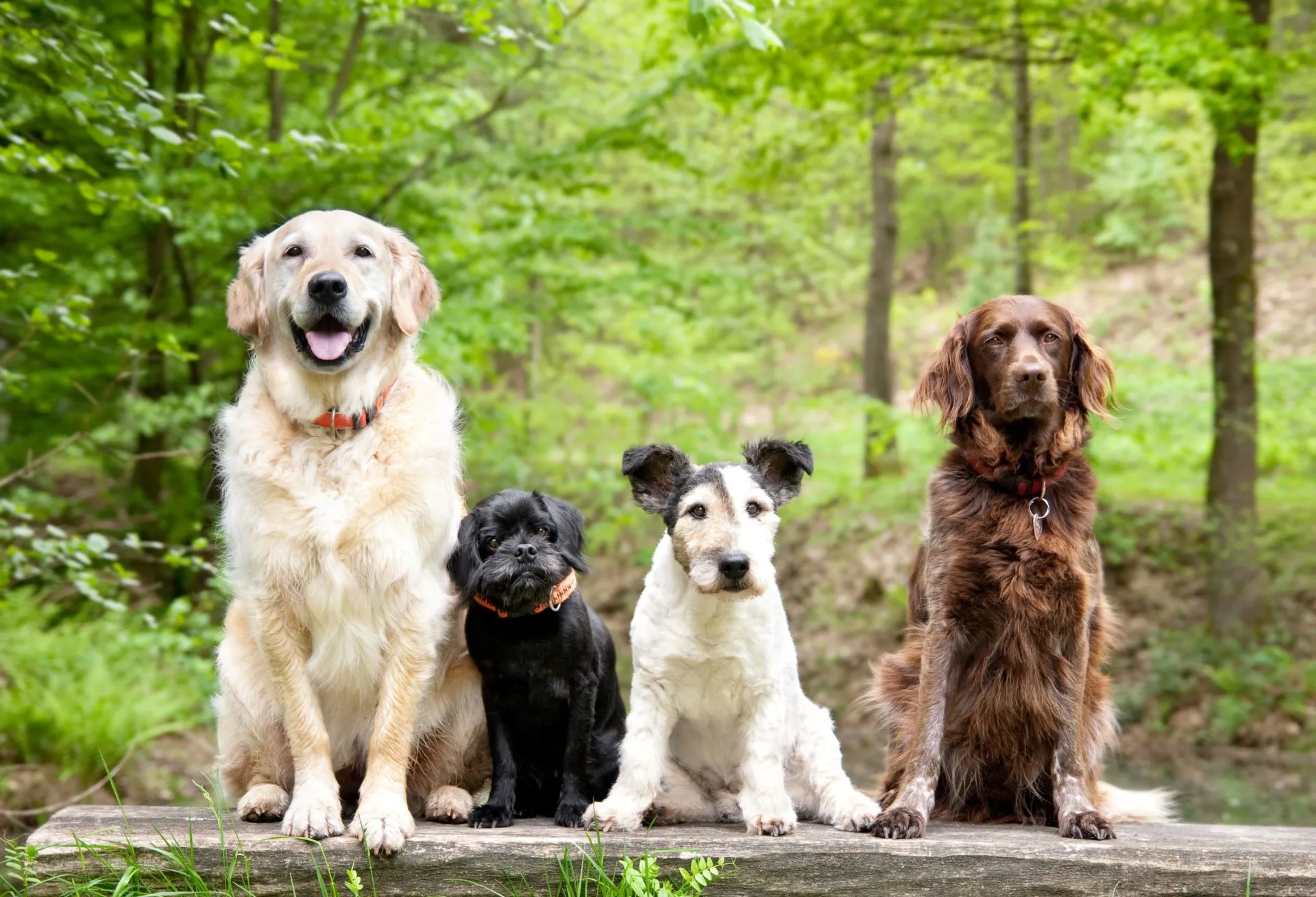Peanut Butter Appreciation Day is coming up January 24th. This is one snack that can definitely get some tails wagging! You can give your canine buddy some of this delicious snack, though there are a few caveats. A local Salem, VA vet discusses giving Fido peanut butter in this article.
Treats
There are some great recipes for dog treats that include peanut butter. You can also make your own! For a base, you can combine the PB with whole-wheat flour, rgg, pureed pumpkin, ripe bananas, or fat-free yogurt. Feel free to mix and match these ingredients. You can also add shredded chicken, or perhaps little bits of bacon or apple. Divide into small portions, and bake. Start with 15 minutes at 350, and go from there. If you need help developing a balanced diet plan for your dog that includes treats, our Vet Nutrition & Weight Management services can provide personalized recommendations.
Safety
While not all of our favorite foods are safe for our canine companions, peanut butter is on the approved list … with one major caveat. You do need to make sure to only give Fido brands that do not contain xylitol. Xylitol is a preservative that is found in many processed foods, particularly sweets and baked goods. It’s safe for us, but is unfortunately toxic to our furry friends. For more information on dogs and peanut butter, check out our article on Fido’s Love Of Peanut Butter. Always check the label!
Storage
Exact storage times will always vary a bit, depending on what’s in a particular batch of cookies. Most cookies should be fine for days or even weeks in a sealed tin or bag. You can also freeze your furry pal’s treats.
Presentation
Fido really won’t care what his treats look like. However, it’s not a bad idea to get a cute bone-shaped mold. This can help distinguish your pup’s cookies from human ones. Plus, homemade dog treats can make great gifts! Put them in a mason jar, and tie a pretty ribbon around it.
Hacks
Peanut butter can also come in handy for those times when you might need to trick Fido a little. You may have seen memes about spreading peanut butter on your shower wall to distract your four-legged friend while he’s getting bathed. We’re not entirely sold on this … the main concern being that your pooch could ingest mold, soap, or shower-cleaning chemicals. Either scrub the shower before and after, or just use a plate. Peanut butter can also be useful when giving pills.
Our Advice on Giving Fido Peanut Butter in 2024
How much peanut butter is safe for a dog to eat?
The amount of peanut butter that is safe for a dog to consume depends on the size of the dog and any existing health conditions. As a general guideline, it’s recommended to limit peanut butter to no more than 10% of a dog’s daily caloric intake. For a medium-sized dog, this would equate to about 1 tablespoon per day. It’s crucial to choose a peanut butter brand that does not contain xylitol, as this artificial sweetener is toxic to dogs. Owners should always monitor their dogs for any adverse reactions and consult with a veterinarian if they have concerns about their dog’s peanut butter consumption.
How often can you give your dog peanut butter?
As a veterinary professional, it is recommended that peanut butter be given to dogs in moderation as an occasional treat, not as a daily staple in their diet. While most dogs can safely consume peanut butter, it should be limited to a frequency of no more than a few times per week, depending on the individual dog’s size, health, and overall caloric intake. It is essential to choose a xylitol-free peanut butter and to monitor the dog’s reaction to the treat. Consult with a veterinarian to determine the appropriate serving size and frequency for your specific dog.
What are the symptoms of xylitol poisoning in dogs?
Xylitol poisoning in dogs can be a serious and potentially life-threatening condition. Symptoms typically appear within 15 to 30 minutes of ingestion and may include vomiting, weakness, lack of coordination, difficulty walking or standing, and seizures. In some cases, dogs may experience a rapid drop in blood sugar (hypoglycemia), which can lead to collapse, loss of consciousness, or even liver failure. If a dog is suspected to have consumed xylitol, it is critical to seek immediate veterinary care. Prompt treatment can help prevent severe complications and improve the chances of a successful recovery.
Can peanut butter trigger allergies in certain dogs?
While peanut butter is generally considered safe for most dogs, it is possible for some dogs to develop an allergic reaction to peanuts or other ingredients in peanut butter. Symptoms of a peanut allergy in dogs may include itching, hives, swelling of the face or ears, difficulty breathing, and gastrointestinal issues such as vomiting or diarrhea. Dogs with a history of food allergies or sensitivities may be more prone to developing a peanut allergy. If a dog exhibits any signs of an allergic reaction after consuming peanut butter, it is important to stop giving the treat and consult with a veterinarian for proper diagnosis and treatment. Alternative treat options can be discussed for dogs with peanut allergies.
Does the type of peanut butter matter (smooth vs. crunchy)?
The choice between smooth and crunchy peanut butter for dogs is primarily a matter of personal preference and the individual dog’s chewing abilities. Both types can be safe for dogs to consume, as long as they do not contain xylitol or other harmful additives. Smooth peanut butter may be easier for some dogs to eat, particularly those with dental issues or smaller mouths. Crunchy peanut butter, on the other hand, can provide a more engaging texture for dogs who enjoy chewing. Regardless of the type chosen, it is important to read the label carefully and select a peanut butter that is free from xylitol and other potentially dangerous ingredients. As with any treat, peanut butter should be given in moderation as part of a balanced diet.
As your Salem, VA veterinary clinic, we’re ‘nuts’ about giving our canine patients great care. Contact us anytime!



